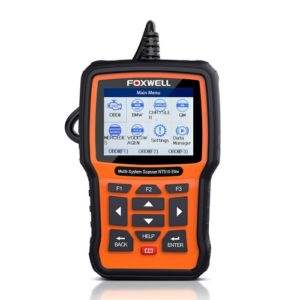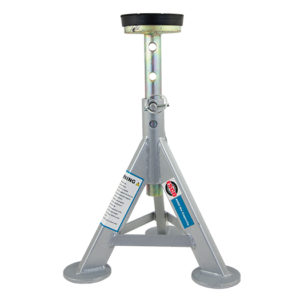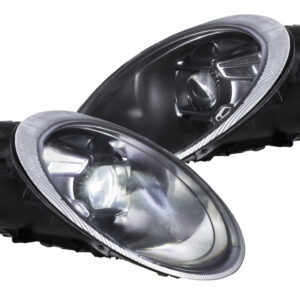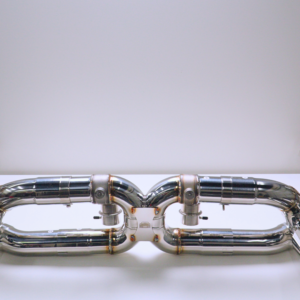Engine oil is vital to your car’s engine. It’s primary function is to protect internal moving parts by providing lubrication to reduce friction and metal on metal contact. Over time the oil loses its critical properties, so regular replacement of the oil and filter are essential to maintaining your vehicle’s engine.
Porsche recommends changing the engine oil and filter every 1 year or 10,000 miles. However, we recommend a replacing your engine oil every 5,000 miles if you want to keep your engine healthy for years to come. While it may be intimidating to work on your Porsche, changing the oil and filter isn’t much different than on other vehicles. This is a great entry-level maintenance procedure that you can perform yourself and save yourself money on year after year.
Instead of paying over $300 for a SIMPLE oil change at a Porsche dealership, use our detailed DIY guide to learn how to change your own oil for less than $100. To perform this DIY, check out the following video from YouTuber, CarFanatic. While the video covers the procedure on a non-turbo 997.2, the procedure is nearly identical for the 997.2 Turbo and Turbo S. Detailed steps can be found below.
Oil filter cap: 19 ft-lbs
Oil drain plug: 37 ft-lbs
Oil capacity: 8 liters
Step 1: Prepare your vehicle and work area.
- Warm up the engine by driving your car around for 15 minutes. This will help the oil flow more easily.
- Gather required tools and parts and put on gloves and eye protection.
- Position vehicle on a flat surface.
- Open the engine cover.
Step 2: Raise the rear of the vehicle if extra ground clearance is needed
- TIP: Most people should be able to perform the oil change without raising the vehicle if they use a low profile drain pan (linked in the tools section).
- However, if extra clearance is needed, raise the vehicle using either vehicle ramps or jack stands.
- Place wheel chocks in front of the front wheels to prevent the car from rolling.
- To lift your vehicle on jack stands, check out this helpful video from the YouTube channel CarFanatic.
Step 3: Drain the engine oil.
- Unscrew the oil fill cap, which will help the engine oil drain more easily.
- Place the drain pan under oil drain plug.
- Remove the oil drain plug using an 8mm hex socket and ratchet; be sure to grab it so it doesn’t fall into the drain pan.
- Let the oil drain for 30 minutes.
- Note: If you’re using a low profile oil drain pan, it will likely not be able to contain all of the engine oil. Switch drain pans before the first overflows by carefully sliding the full one over while quickly getting the new drain pan in place.
Step 4: Replace the engine oil filter.
- While the oil is draining, locate the oil filter housing located under the engine cover on the passenger’s side.
- Use a 36mm socket to remove the oil filter cap.
- Dispose of the old oil filter, then clean the inside of the oil filter cap and the oil filter housing with a clean towel.
- Remove the o-ring seal on the oil filter cap using a small flat head screwdriver, then install a brand new o-ring seal.
- Dab some new oil on the o-ring seal, which will help create a leak-free seal.
- Place a new oil filter into the oil filter housing and ensure you seat it properly.
- Re-install the oil filter cap and tighten it to 19 ft-lbs using a torque wrench.
Step 5: Re-install the oil drain plug.
- After allowing the oil to drain, re-install the oil drain plug along with a brand new crush washer; if you do not use a new crush washer, the engine oil will likely leak.
- Tighten the oil drain plug with new crush washer to 37 ft-lbs using a torque wrench.
- Note: While Porsche recommends using a new oil drain plug, you can re-use your old one as long as it is in good condition and you use a new crush washer.
Step 6: Add new engine oil.
- To prevent from overfilling your engine oil, add only 7 liters.
- Ensure there are no engine oil leaks.
- If you raised your vehicle, lower it back down so it sits level.
Step 7: Ensure the engine oil has been filled to the correct level.
- Start engine and allow it to warm up.
- When the car is sufficiently warm, you can have your onboard computer measure the oil level by selecting “Oil” on your gauge cluster.
- The upper line of the digital oil level reading is the max.
- The lower line of the digital oil level reading is the minimum.
- Each increment represents a little less than 0.42 quarts.
- Based on the reading, turn off your engine and add more oil as needed.
Step 8: Reset the vehicle's service indicator.
- To reset your service indicator, you will need a tool like the Foxwell NT510.
- Connect the diagnostic tool to the OBDII port and turn the ignition to the “ON” position.
- Go through the menus on the diagnostic tool.
- You should be able to select your vehicle and find an “oil lamp reset” functionality.
- To get a general sense of how such diagnostic tools work, check out the following video. While the iCarSoft POR II featured would work, we recommend the Foxwell because it has additional features like the ability to register a new battery to your vehicle.
Step 9: Collect all of your tools and clean up.
- Note: Engine oil is damaging to the environment. Take your used engine oil to any local auto parts store to recycle it.







Leo Waner says:
Great summary. Very much more useful than many of the YouTube videos where the critical steps are rushed or blocked due to poor video/camera positioning. Thanks
Will likely need some rubberized, short jack stands, I’ll certainly investigate your recommendations first.